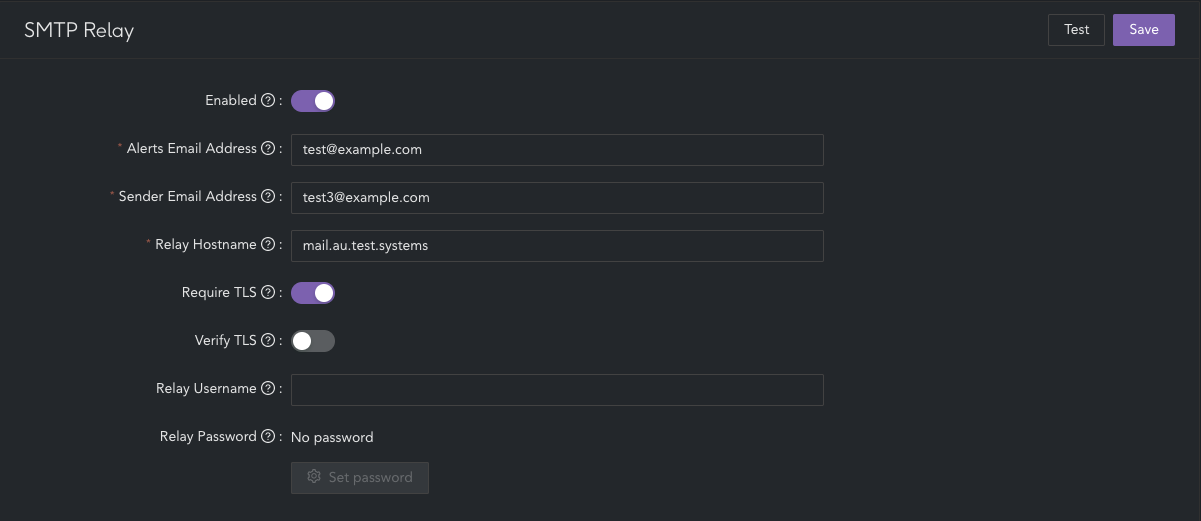SMTP Relay
An SMTP relay is used by the CyberEdge to send email notifications for important system events, policy alerts and to deliver scheduled reports. To configure an SMTP relay navigate to;
- System > General > SMTP Relay
- Set SMTP Relay to "enabled" and set the following configuration;
- Alerts Email Address: Address to receive alerts on CyberEdge updates. Required if Sender Email Address or Relay Hostname are specified
- Sender Email Address: Address which appliance emails are sent from. Required if Alerts Email Address or Relay Hostname are specified
- Relay Hostname: Hostname of SMTP relay server. Required if Alerts Email Address or Sender Email Address are specified. The appliance will connect on port 25 (SMTP) or port 587 if TLS is required
- Require TLS: Connect to the SMTP relay via an encrypted TLS connection. If enabled, the CyberEdge will connect directly with TLS on port 587. If disabled, the appliance may upgrade to TLS if the relay advertises support
- Verify TLS: Verify the SMTP relay's TLS certificate against the CYberEdge certificate trust chain. Disabling this verification is a security risk, but may be required if the relay uses an internal or self-signed certificate
- Relay Username: Username for authenticating to the SMTP relay host
- Relay Password: Password for authenticating to the SMTP relay host
- When SMTP relay information has been added,
- Click "Save"
- Click "Save" and "Apply changes"
To ensure that the SMTP configuration is working successfully, it is important to test the configuration. To test SMTP Relay is set correctly, navigate to:
- System > General > SMTP Relay
- Click "test"
A test email will be sent to the specified email address. To view logs for the SMTP relay, navigate to Status > Log Viewer > SMTP Relay.

Important info
It is important to configure SMTP Relay to ensure the CyberEdge can access a mail server for sending important notifications including scheduled reports, critical system events, firmware update alerts, and more.